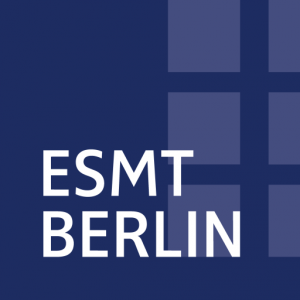Partnerships
Each agreement is designed according to the structure concerned and the possibilities of evolution of the collaboration. For example, research collaboration agreements provide a clear and well-defined framework for an established and sustainable cooperation between the SDRT and the institution concerned, while MoUs provide a more flexible framework and thus allow for the establishment of a one-off collaboration that can be developed at a later stage.
SDRT's Research Collaboration Agreements
La Fondation Maison des Sciences de l'Homme (FMSH)
The research collaboration agreement set up with the FMSH as part of the SDRT's participation in the second International Panel on Emerging from Violence (IPEV2). This led the two institutions to mobilize their elements on the themes and issues of terrorism, radicalization and social violence, particularly with a view to possibly join responses to calls for research proposals and calls for projects.
- The methods, from the birth and then the rise of terrorist networks in Europe, Africa or the Middle East, their financing and ideological inspirations. These studies should make it possible to detect whether the advancement and operational evolution of these networks is simply the result of self-learning processes and/or whether significant institutional influences would also be detectable.
- The mechanisms of diffusion of radical Islam and the vectors of expansion of the terrorist threat. Indeed, even if it is essential to keep in mind the sources of the adhesion of certain populations to the Salafist Takfiri ideological matrix and to keep in mind the main foundations in the current 'ideological offer' of Al Qaeda, the Islamic state, and their affiliates, one should not lose sight of the analysis of the proselytizing mechanisms that can weave bridges and connect radicalized environments to armed terrorist groups.
- Threats linked to cyberspace are a priority in any strategic reflection on the security and defence of a territory and its population in the 21st century.
- The social-psychological mechanisms for the spread of violence and radical Islam. Among these issues, an attentive look is taken at the analysis of propaganda techniques and digital recruitment of jihadist groups, their references and their finesse in the use of psychological levers for radicalization and, finally, the acquisition of new means of cyber-offensives, such as encryption, is to be followed particularly closely.
Centre d'Étude et de Recherche en Droit Administratif, Constitutionnel, Financier et Fiscal (Université Côte d'Azur)
The research collaboration agreement between the SDRT and the CERDACFF (Côte d'Azur University) focuses on a number of common areas of interest. In terms of research, the SDRT and the CERDACFF are working on the following themes and issues, particularly with a view to possibly join responses to calls for research proposals and calls for projects :
- The issues surrounding the need for the formation of a comprehensive internal security strategy, integrating all the dimensions of the threats concerned (in particular terrorism and organized crime) at the level of both public and private institutions.
- The prospects for the prevention and repression of current security and criminal threats in the light of the upheavals they entail in the way the State and local authorities manage their territories.
- The current gaps in the criminal law with regard to the repression of cyberthreats, with a broader focus on the difficulties in the development and application of the law in relation to cyberspace and the various possible solutions to remedy them, and a specific emphasis on issues of fraud in cryptography.
 L'Institut sur la sécurité globale et l'anticipation de l'Université de Technologie de Troyes
L'Institut sur la sécurité globale et l'anticipation de l'Université de Technologie de Troyes
The collaboration agreement between the SDRT and ISGA of the Troyes University of Technology will allow the development of collaborations in research and education, particularly on the following points, which represent the main themes of research and expertise of ISGA :
- Threat anticipation and security strategies;
- Risk analysis, crisis management and business continuity;
- Digital trust and cyber threats.
Memoranda of Understanding (MoU)
 European School of Management and Technology (ESMT), Berlin
European School of Management and Technology (ESMT), Berlin
As part of their MoU, the SDRT and ESMT commit to establish on an annual or biennial basis a co-sponsored workshop, conference or symposium, publication or joint research activity or exchange of academic partners on cybersecurity and national policy issues related to cybersecurity. The value of this collaboration lies in the ability to bring together a wide range of cyber experts to address targeted national security issues of relevance to the security services of both countries.



